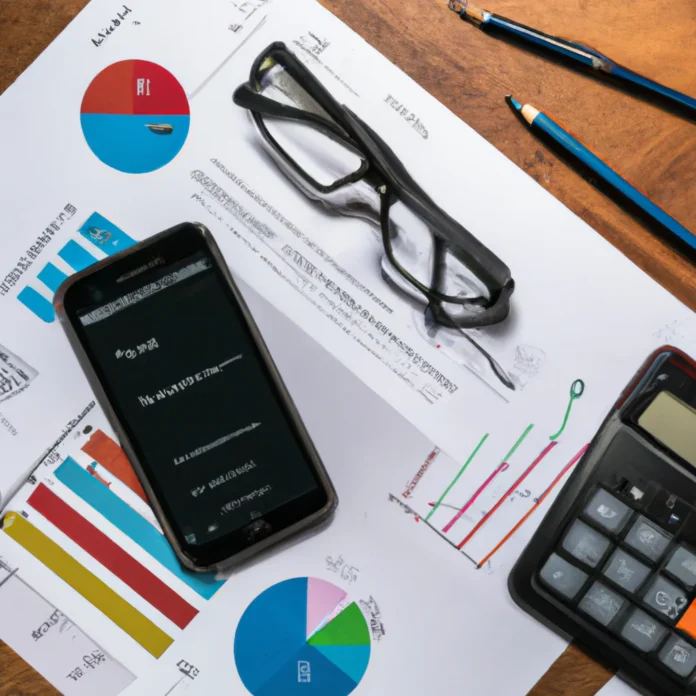Why Is the Most Expensive Phone So Intriguing?
There is a unique fascination with the most expensive phone on the market. For many, the idea of spending a fortune on a device that could be easily lost, dropped, or outdated seems perplexing. Yet, these phones consistently capture headlines, spark debates, and ignite curiosity among tech enthusiasts and collectors alike.
What drives this intrigue? It’s not just about the cost, but also the exclusivity, craftsmanship, and social symbolism attached to these ultra-luxury devices. The allure often lies as much in the story behind the phone as in the object itself.
What Defines the ‘Most Expensive Phone’?
Defining the most expensive phone requires more than checking the price tag. These devices stand apart due to their unparalleled combination of rare materials, innovative technology, and brand prestige. They are not simply smartphones; they are statements of status, taste, and sometimes, extravagance.
Factors such as limited production runs, celebrity associations, and bespoke customization further distinguish these phones from mainstream flagships. In many cases, the price reflects a blend of artistry, heritage, and cutting-edge engineering.
Historical Evolution of Luxury Phones
The journey of luxury phones began decades ago, as manufacturers experimented with gold-plated casings and gemstone embellishments. Early models catered to a clientele seeking both technological advancement and opulence in their accessories.
Over time, the concept evolved, with brands like Vertu pioneering hand-assembled devices and collaborations with renowned jewelers. What started as simple ornamentation has developed into a sophisticated industry, where each release seeks to push the boundaries of design and exclusivity.
Who Buys the Most Expensive Phones—and Why?
Owners of the most expensive phones typically fall into distinct categories: business magnates, celebrities, royalty, and dedicated collectors. For some, these devices serve as status symbols, projecting wealth and influence. For others, they represent investments or personalized heirlooms.
Motivations range from the desire for exclusivity and prestige to an appreciation for craftsmanship and bespoke technology. The psychological appeal of owning something rare and extraordinary cannot be underestimated, as we discussed in our analysis of what makes the most expensive phone so priceless.
Top Contenders: Which Phones Currently Hold the Record?
The title of world’s most expensive phone is hotly contested. Over the years, brands have released limited-edition models that fetch staggering sums at auction or through private sales. The current record holders often feature gold, diamonds, and rare customizations that set them apart from even the most advanced consumer devices.
Models like the Falcon Supernova, Goldvish Le Million, and Vertu Signature Cobra have each, at different times, claimed the top spot, as detailed in our comprehensive facts and prices guide.
A Closer Look: The Most Expensive Phone in 2024
In 2024, the most expensive phone is a bespoke masterpiece that combines technological prowess with breathtaking artistry. Crafted from 24-karat gold, encrusted with flawless diamonds, and finished with exotic leathers, this device exemplifies the pinnacle of luxury engineering.
Only a handful of units exist, each tailored to the owner’s specifications. The phone’s hardware rivals that of flagship models, while its software is enhanced with exclusive security features. This year’s record-holder is not just a communication device—it is a portable work of art.
Key Features That Drive Up the Price
What sets these phones apart is not just their impressive price tags, but the features and materials that justify such expense. Let’s examine the elements that contribute most significantly to their cost.
Materials: What Are These Phones Made Of?
The choice of materials is a primary driver of value in luxury phones. Manufacturers spare no expense in sourcing the rarest and most exquisite elements for both aesthetics and durability.
Gold and Precious Metals
Many high-end phones feature casings made from solid gold, platinum, or rose gold. These metals not only provide a rich, tactile feel but also lend the device an unmistakable weight and luster that signals luxury from the first touch.
Diamonds, Gemstones, and Embellishments
Diamonds and other precious stones often adorn the bodies of ultra-luxury phones. Each gem is meticulously selected and set by skilled artisans, transforming the phone into a dazzling accessory fit for royalty.
Exotic Leathers and Rare Materials
Some brands incorporate rare leathers—such as crocodile, ostrich, or lizard—into their designs. These unique textures add a sensory richness and exclusivity, as no two devices are exactly alike.
Craftsmanship: The Artistry Behind the Device
Beyond materials, the level of craftsmanship involved in producing these phones is extraordinary. Every detail is scrutinized, and quality is never compromised.
Handmade vs. Mass-Produced
Unlike typical smartphones, many luxury phones are assembled by hand, ensuring precision and attention to detail. This artisanal approach guarantees that each device meets the highest standards of excellence.
Custom Engravings and Personalization
Owners often have the option to add personal engravings—initials, family crests, or unique symbols—making each phone one-of-a-kind. These touches further elevate the device from a mere gadget to a personal treasure.
Technological Innovation: Are Expensive Phones More Advanced?
While luxury phones are renowned for their materials and design, their technological capabilities are equally impressive. Many incorporate state-of-the-art hardware and software features unavailable in mainstream devices.
Cutting-Edge Hardware
Top-tier processors, high-resolution displays, and advanced camera systems are standard in these phones. Some models introduce experimental technologies that may later filter down to mass-market products.
Exclusive Software Features
Luxury phone users often enjoy access to exclusive apps, concierge services, and customized operating systems designed for privacy and convenience. These features cater to the unique needs of high-net-worth individuals.
Security and Privacy Enhancements
Enhanced security is a hallmark of the most expensive phones. They may include encrypted communications, biometric access, and anti-hacking measures to protect sensitive information.
For those interested in how these innovations compare across brands, we recommend our analysis on what the most expensive phone in the world is worth today.
Brand Power: How Much Does the Name Matter?
The influence of brand reputation on the price of luxury phones is considerable. Well-known names can command premiums far above the intrinsic value of the materials and technology involved.
Iconic Luxury Brands in the Phone Industry
Brands like Vertu, Goldvish, and Gresso have established themselves as leaders in the luxury phone market. Their legacy of quality and exclusivity assures buyers of both status and reliability.
Celebrity Endorsements and Their Impact
Celebrity ownership and endorsements often elevate a phone’s desirability. Whether spotted in the hands of a superstar or featured in high-profile events, these associations add an intangible cachet that resonates with buyers.
Limited Editions: The Allure of Rarity
Scarcity is a powerful driver of value in the world of luxury phones. Limited editions create a sense of urgency and exclusivity that appeals to collectors and enthusiasts alike.
How Limited Are These Phones?
Some models are produced in runs as small as five or ten units. Each is accompanied by a certificate of authenticity, and the exact number produced is often a closely guarded secret.
Numbered Series and Collectability
Phones released as part of a numbered series are especially prized. The lower the number in the sequence, the higher the perceived value, turning these devices into coveted collector’s items.
As experts often say:
“Scarcity, when paired with craftsmanship and innovation, transforms an ordinary product into a timeless collectible.”
Customization Options: Tailoring Your Device
Personalization is at the heart of the luxury phone experience. Buyers can work closely with designers to create a device that reflects their individual style and preferences.
Personalized Designs and Colors
From custom color schemes to unique patterns, the options for personal expression are nearly limitless. Some brands even offer one-on-one design consultations to achieve the perfect look.
Monogramming and Bespoke Services
Monogramming, inlaid initials, and family crests are popular choices for those seeking a truly personal touch. Bespoke services may also include exclusive wallpapers, ringtones, and preloaded content.
The True Cost Breakdown: What Are You Really Paying For?
Understanding the total cost of a luxury phone requires looking beyond the sticker price. Several factors contribute to the final amount spent.
Material Costs
Gold, diamonds, and rare leathers significantly increase production costs. The quality and quantity of these materials have a direct impact on the phone’s value.
Research and Development Expenses
Luxury phones often introduce new technologies and design innovations. The investment in research and development is reflected in the price, as brands strive to stay ahead of the curve.
Marketing and Brand Premiums
High-profile advertising campaigns, celebrity collaborations, and exclusive launch events all contribute to the brand premium. Buyers pay not just for the product, but for the prestige that comes with it.
Distribution and After-Sales Support
Luxury brands offer white-glove delivery, personalized setup, and dedicated customer support. These services ensure a seamless experience from purchase to everyday use.
Comparing Expensive Phones to Standard Flagship Models
How do ultra-luxury phones stack up against mainstream flagship devices? The differences are often striking, both in terms of performance and design.
Performance Differences
While luxury phones typically offer competitive hardware, their focus may lean more toward exclusivity and aesthetics than raw performance. That said, many still rival top-tier models in speed and capability.
Design and Build Quality
The most expensive phones are distinguished by their meticulous construction and use of premium materials. Every detail is crafted for both beauty and durability, setting them apart from mass-produced alternatives.
Longevity and Software Updates
Luxury phones may receive longer-term software support and exclusive updates, though this can vary by brand. Owners often enjoy personalized assistance with upgrades and repairs.
Are Most Expensive Phones Worth the Price?
Deciding whether a luxury phone is worth its price is highly subjective. For some, the value lies in ownership experience, while others prioritize investment potential or collectability.
Value Retention and Depreciation
Unlike standard phones, some luxury models maintain or even increase in value over time, especially if they are rare or historically significant.
Resale Market for Luxury Phones
The secondary market for these devices is robust, with collectors seeking out limited editions and well-preserved examples. However, resale values can fluctuate based on trends and collector demand.
For further insight into the nuances of high-value phone ownership, see our article on the world of the most expensive phones revealed.
What Are the Hidden Costs of Owning an Expensive Phone?
Ownership of a luxury phone goes beyond the initial purchase. There are several hidden costs that buyers should be aware of to make an informed decision.
Insurance and Protection Plans
Given their value, insuring a luxury phone is essential. Premiums can be substantial, reflecting the cost of repair or replacement in case of loss or damage.
Maintenance and Repairs
Repairs often require specialized technicians and rare parts, making them more costly and time-consuming than for standard models.
Security Risks and Targeting
Luxury phones may attract unwanted attention, increasing the risk of theft or cyber-attacks. Owners should invest in robust security measures and remain vigilant.
How Do Luxury Phones Impact the Environment?
The environmental impact of luxury phones is an important consideration. The sourcing of rare materials and the production process can have significant ecological consequences.
Sourcing of Rare Materials
Mining for gold, diamonds, and exotic leathers can contribute to habitat destruction and pollution. Responsible brands are increasingly transparent about their sourcing practices.
Sustainability Initiatives by Luxury Brands
Some manufacturers are adopting eco-friendly measures, such as recycled materials and carbon-neutral production, to reduce their environmental footprint.
E-Waste and Recycling Challenges
Disposing of or recycling luxury phones presents unique challenges, given the combination of precious and hazardous materials. Brands are beginning to offer take-back and recycling programs to address this issue.
The Role of Status and Social Proof
Owning the most expensive phone is often as much about status as functionality. These devices serve as visible signals of wealth, taste, and exclusivity within social circles.
Psychology of Luxury Purchases
The decision to purchase a luxury phone is frequently influenced by psychological factors, including the desire for validation, prestige, and distinction from the crowd.
Influence on Social Circles and Networks
Displaying an ultra-luxury device can enhance one’s standing in certain communities, opening doors to new relationships and opportunities.
This phenomenon is particularly noticeable with high-profile models like the iPhone Falcon Supernova, as discussed in our review of the truth behind the most expensive iPhone models.
Case Studies: Stories Behind Famous Expensive Phones
Examining the stories behind iconic luxury phones provides insight into what makes these devices so desirable—and valuable.
The iPhone Falcon Supernova
This model is renowned for its 24-karat gold chassis and a large pink diamond set into the rear panel. Only a handful exist, making it a favorite among celebrities and royalty.
Goldvish Le Million
Once listed in the Guinness World Records, the Goldvish Le Million is crafted from solid gold and adorned with hundreds of diamonds. Its unique shape and rarity make it a true collector’s piece.
Vertu Signature Cobra
This phone stands out for its striking design—featuring a cobra made from precious stones wrapped around the device. The craftsmanship and creativity behind the Cobra series have cemented Vertu’s reputation for innovation.
How to Spot a Fake Luxury Phone
The market for counterfeit luxury phones is thriving, making it essential for buyers to know how to authenticate their purchases.
Common Counterfeit Indicators
Poor build quality, misspelled brand names, and substandard materials are red flags. Authentic luxury phones will always exhibit flawless construction and accurate branding.
Authentication Services
Reputable brands and third-party experts offer authentication services, providing peace of mind for buyers investing in high-value devices.
Where to Buy the Most Expensive Phones Safely
Purchasing a luxury phone should be a secure and enjoyable experience. Buyers must take certain precautions to avoid scams and ensure authenticity.
Authorized Retailers and Boutiques
Buying from official brand boutiques or authorized dealers is the safest way to guarantee authenticity and receive full after-sales support.
Online Marketplaces: Risks and Precautions
While some online platforms offer genuine luxury phones, the risk of counterfeit products is higher. Always research the seller’s reputation and request proof of authenticity before completing a transaction.
Financing Options for Ultra-Luxury Phones
Given their price, many buyers explore financing options for their luxury phone purchases. Understanding the pros and cons of each method is vital for a satisfactory experience.
Leasing vs. Buying Outright
Leasing allows for lower upfront costs and the ability to upgrade more frequently, while outright purchase provides long-term ownership and potential investment value.
Installment Plans and Credit
Some retailers offer installment plans or partner with financial institutions to provide credit. Buyers should carefully review terms and ensure affordability before committing.
Future Trends: Will Phones Get Even More Expensive?
The future of luxury phones promises even greater integration of rare materials, advanced technology, and personalized services. As demand for exclusivity grows, so too may the price ceiling.
Emerging Technologies and Luxury Integration
We anticipate the adoption of technologies such as foldable displays, AI-driven features, and enhanced security protocols, all wrapped in ever-more opulent designs.
Potential for Custom Smart Devices
Custom smart devices tailored to individual lifestyles and preferences may become the next frontier in luxury, blending connectivity with personal expression in unprecedented ways.
Should You Invest in a Most Expensive Phone?
The decision to purchase a most expensive phone depends on your goals, lifestyle, and appreciation for both technology and craftsmanship.
Pros and Cons for Collectors
Collectors value rarity, provenance, and potential appreciation. However, the market can be unpredictable, and liquidity may be limited compared to other assets.
Practical Considerations for Everyday Users
For daily use, the cost may outweigh the benefits, especially given the risks of damage or obsolescence. Prospective buyers should weigh their priorities carefully.
Frequently Asked Questions About Expensive Phones
We often receive questions about luxury phones: Are they more reliable? Do they offer better customer support? Can they be used internationally? The answers depend on the brand and model, but most luxury phones are designed to meet the highest standards of performance and service, with global compatibility and dedicated support teams.
For further details on specific models and their unique features, refer to our in-depth resources throughout this blog.
Conclusion: Is the Real Cost Justified?
The true cost of owning the most expensive phone extends far beyond materials and technology. It encompasses exclusivity, craftsmanship, brand prestige, and the intangible rewards of status and personal expression. For some, these factors more than justify the investment; for others, practicality takes precedence. As we have shown throughout this guide, the decision is deeply personal and shaped by individual values.
If you are considering a luxury phone, we encourage you to weigh all aspects carefully. For more insights and expert perspectives on the evolving world of high-end technology, visit Autoxite—your trusted source for in-depth analysis and guidance.


